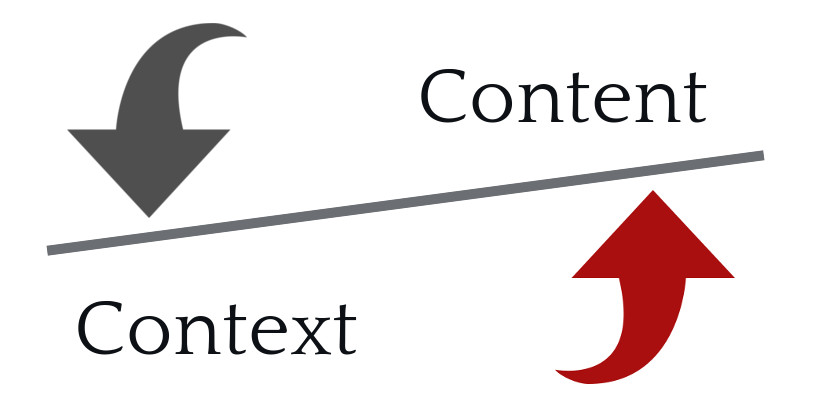
A conversation with a former supplier got me thinking about the importance of context. As communicators and executives, we often begin a communication plan with our own needs to provide information. It's about what we have to tell them versus what they, our audience, wants and/or needs to know.
Here's what I've learned. The content or 'stuff' we'd like to communicate matters less than the context that will help us ultimately connect with our audience. The context also takes a large amount of information and boils it down to what's needed to successfully communicate. Remember, I've said before that successful communication is defined as a message that has been sent, received, understood, and if appropriate, acted on.
As Chair of the IABC Gold Quill Awards, I realized that many of my thoughts around context are closely aligned to the IABC Gold Quill Award Communication Management Work Plan Guidelines. The same guidance we give to entrants can be used in planning communication.
What is the Background?
The organization's business and trading environment, along with any economic or regulatory changes are important pieces of context to understand. Also how the communication plan or tactic will help address any business strategy, opportunities or threats.
Who is the Audience?
When identifying your audience, focus on more than just demographics (age, gender, geography). Psychographics like attitudes, emotions and opinions along with past experience, education and access to technology are also important contextual elements to consider.
What are your Objectives?
What does success look like? This is an important question to ask yourself and your clients. And the answer can't refer to delivering the communication tactic ...i.e. writing the newsletter, sending the email or creating the video. The answer should focus on the outcome you plan to achieve. I often ask clients what they want employees to be aware of, understand, believe and do with the information.
From these three pieces of information, the appropriate strategies, tactics and key messages can be produced in a way that will truly resonate with your audience.
As an Internal Communication consultant, my mantra has always been 'communication for better business outcomes.' I've learned that taking the time to plan and truly understand the nuances of a company and its employees can result in successful communication that is useful versus ignored. By adding context, to your content, you have the potential to give your audience powerful communication that inspires trust and action.
If you found this post helpful, you’ll also enjoy our newsletter. It’s a monthly collection of ideas, resources, and inspiration for those passionate about enabling, engaging and empowering employees through strategic internal communication.